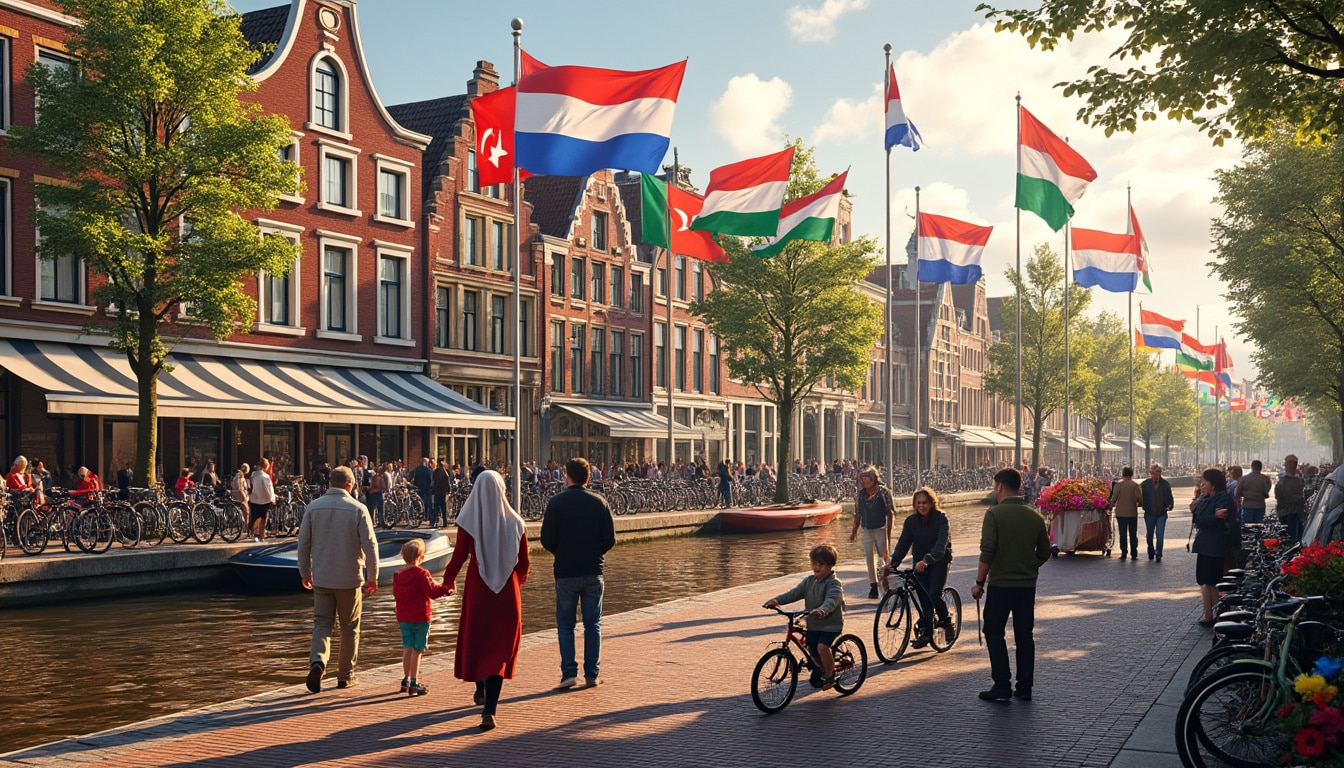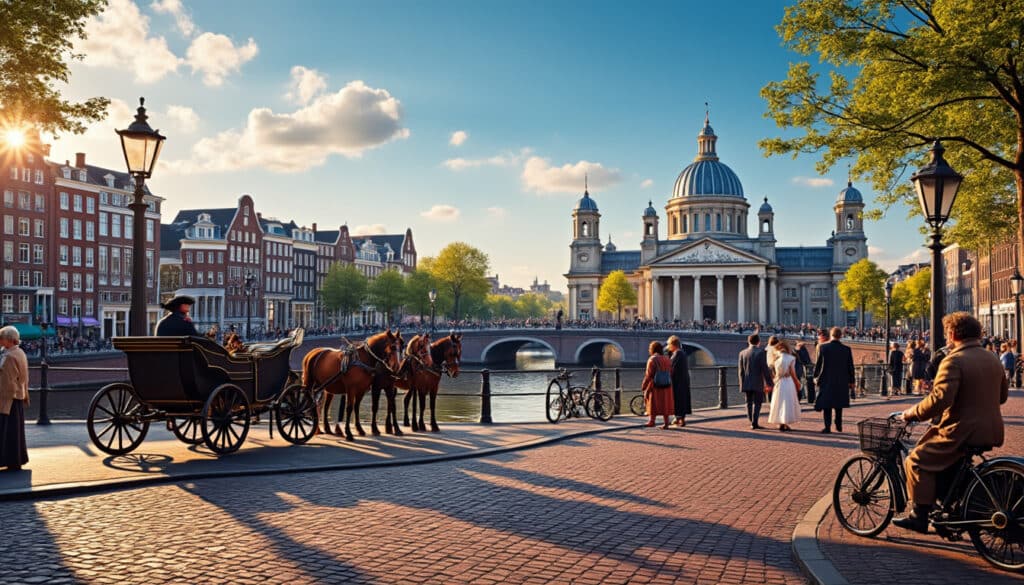The vibrant city of Amsterdam, with its rich tapestry of history and culture, showcases its identity in manifold ways. Beyond its iconic canals and architecture, the names and symbols, such as flags and coats of arms, deeply root its unique identity. From the riveting story of the city’s flag to the mysterious Amsterdam coat of arms and the nuances embedded within the names of places and landmarks—these elements are reflections of the city’s storied past and dynamic present. They tell tales of Amsterdam’s resilience, trade, and cosmopolitan spirit, making this city not just a geographic location but a representation of cultural and historical significance.
The Historical Significance of Amsterdam’s Flag
Amsterdam’s flag, simple yet visually impactful, is an emblem rich with historical significance. The flag consists of three horizontal bands, with two outer red stripes sandwiching a black stripe. The black stripe bears three white Saint Andrew’s Crosses. The crosses are named after Andrew, the apostle, who was crucified on an X-shaped cross. This symbolism dates back centuries, with the flag’s earliest usages speculated around the 14th century.
A common myth associates the three crosses with the trio of misfortunes that befell the city throughout its history—floods, fires, and the plague. However, there is no concrete historical evidence to support this connection. Instead, these crosses have become emblematic of Amsterdam’s robustness and tenacity as a city that withstood adversity and emerged resiliently.
The design of the flag is so distinctive that it has inspired admiration and a sense of pride among the residents. Roman Mars, a well-known vexillologist, famously declared it as “the most badass city flag in the world” during his TED Talk. This is not only due to its unique design but also because of the powerful symbolism it conveys—strength, resilience, and unity.
The flag of Amsterdam is omnipresent throughout the city—from government buildings and tourist hubs to casual street corners—reinforcing the city’s identity and pride. In today’s Amsterdam, this historically steeped flag stands not just as a municipal symbol but as a representation of cultural pride and an integral part of its international branding, adding to the allure for visitors and residents alike. The flag’s design allows for easy applicability; you’ll see it emblazoned on everything from official stationery to souvenir merchandise.
Apart from history, the flag also represents the cultural ethos of the city, mirroring its reputation as an open, resilient, and liberal society. The iconic flag is even a frequent sight in events like Amsterdam Fashion Week and at venues like Amsterdam ArenA and the Van Gogh Museum, adding to Amsterdam’s image as a vibrant and cosmopolitan city. Next time you spot the flag while watching a football match at the AJAX Amsterdam stadium or sipping on some Amsterdam Gin at a local cafe, you’ll be reminded of its enduring story.

Decoding the Mysteries of Amsterdam’s Coat of Arms
The coat of arms of Amsterdam is another storied piece in the city’s vibrant tapestry. While the exact origins remain a mystery, the center of the coat features the same iconic three St. Andrew’s Crosses found on the flag. These are displayed prominently on a black band across a red shield. The shield itself is crowned by the Imperial Crown of Austria, bestowed upon the city in the late 15th century. This prestigious crown symbolizes the city’s historical significance and political alliances, particularly its ties with the Habsburg Monarchy.
A curious addition to the coat of arms occurred in 1947, after a transformative period in Amsterdam’s history during World War II. Queen Wilhelmina, recognizing the valor of the Amsterdammers during the German occupation, granted the city its official motto: “Heldhaftig, Vastberaden, Barmhartig” which translates to “Heroic, Determined, Merciful.” This motto underscores the city’s storied reputation for resilience and compassion, embodying values that are embraced even amidst today’s bustling city life.
Historians have long speculated about the black band on the shield, suggesting it may symbolize the waters of the rivers Amstel and IJ, around which the city was developed. Others hypothesize that, as a significant trading hub during the Dutch Golden Age, the crown was a strategic emblem signaling Amsterdam’s importance and adding a layer of protection in an era of economic rivalry and maritime expansion.
Two golden lions flank the shield in the coat of arms, standing as silent guardians of the city’s integrity and sovereignty. This heraldic image can be found engraved in stone on various public buildings, class registry ships, and even on plaques marking historical sites, reminding passersby of the deep roots that tie the city to its storied past.
Today, the coat of arms is a ubiquitous symbol that continues to tell the story of Amsterdam. Whether it is featured in exhibitions at the Amsterdam Museum or as part of artistic reinterpretations during cultural festivals, its enigma continues to capture the imagination of locals and visitors alike. In a city known for its openness and diversity, the coat of arms exudes a timeless allure that resonates with all who encounter it.
The Importance of Names in Amsterdam’s Identity
Names in Amsterdam carry deep historical and cultural resonance. The city’s very name is believed to originate from a dam on the river Amstel, a nod to its early beginnings as a humble fishing village. As the city grew into one of Europe’s premier trading hubs, so did the significance of its names within and surrounding the city.
Each canal, street, and neighborhood in Amsterdam seemingly tells a story. From the bustling Dam Square to the historic Jordaan district, the names paint a broad yet intricate picture of the city’s evolution over time. They reflect various facets of Amsterdam’s identity—the old with the new, the traditional with the progressive, embodying the same spirit you might find in the innovative Amsterdam Coffee Company or inside the venerable walls of the Royal Palace Amsterdam.
Neighborhood names such as Westerpark or De Pijp offer historic insights about past lifestyles, evolving economics, or demographic shifts. Some names originate from traders and politicians, while others reflect significant projects completed under various silos of the evolving Dutch Golden Age. This intricate tapestry plays a crucial role not just in how spaces are identified geographically, but also in shaping the collective memory and identity of Amsterdam.
For many locals, these names are not just identifiers but aggregators of lived experience. Each one is a vessel containing vivid stories and rich histories that contribute to the breadth and complexity of Amsterdam’s identity. They’re used in a variety of cultural references from novels to films that contribute to the city’s global narrative. It’s no surprise that most visitors feel an immediate connection to these names—a synergy of past and present embodied in Amsterdam’s inclusive spirit.
Modern Amsterdam continues to embrace its heritage through these names. Events like the Amsterdam Fashion Week often leverage historic venues with evocative names, creating juxtaposition that highlights the seamless blend of old and new. While strolling past names like Prinsengracht or visiting venues such as the Amsterdam ArenA, visitors and residents alike resonate with a profound sense of place layered in centuries of stories.
The Symbolic Role of Flags and Symbols in Local Culture
In Amsterdam, symbols such as flags and coats of arms extend beyond their historical context—they also have a profound impact on modern culture and identity. In the vibrant local scene, these symbols have found new life in contemporary art, popular culture, fashion, and community symbols, becoming ingrained in Amsterdam’s dynamic identity.
Events like the world-renowned I Amsterdam initiative present these symbols as a cornerstone of local branding efforts, echoing unity and belonging. You’ll find these elements showcased not only in traditional icons like the Van Gogh Museum but also visible in street art at unexpected corners. Such widespread use ensures that both residents and tourists engage actively with these symbols as representations of a lively, creative city.
For locals, engaging with these symbols offers a sense of continuity—a tangible connection to their history solaced by evolving interpretations presented through trendy cafes, art installations, and apparel. From clothing emblazoned with the Amsterdam flag at local boutiques to murals featuring the coat of arms, these symbols serve as snapshots of an ever-evolving urban narrative.
In addition, the city’s symbols also make cameo appearances at various events, like the Amsterdam ArenA, cultural festivals, and street parades, reinforcing the city’s identity. They play an instrumental role in forming communities, encouraging cultural exchange, and celebrating diversity—a paragon of the Dutch reputation for celebration and inclusivity.
The conversations these symbols inspire go beyond the superficial; they dig deep into the heart of what it means to live in Amsterdam in 2025. It reflects the city’s complex interplay of tradition and innovation, providing a platform for further dialogue and discovery. Through these symbols, Amsterdam continues to craft a rich, compelling narrative that speaks to everyone while remaining genuinely unique.
Experiencing Amsterdam Through Stories of Identity
For visitors, Amsterdam provides more than scenic waterways and historic architecture; it’s a cultural melting pot where the symbolic and historical exist in harmony. The stories behind names, flags, and symbols provide a fascinating lens through which to experience the city. These elements embody Amsterdam’s layered identity, making it more than just a destination but a narrative waiting to be explored.
Every neighborhood tells its own unique tale, and every bridge or canal holds its own set of stories. From hearing local legends while cruising on a canal to attending art exhibits at the Amsterdam Museum, each experience brings to life these stories that resonate through names and symbols within the city.
When you visit Amsterdam, whether you are participating in events like the Amsterdam Fashion Week or savoring a locally-brewed Heineken, the echoes of history in names and symbols enhance your understanding and depth of experience. These emblems are threads that weave into the city’s cultural fabric, promising a multi-layered journey for each individual.
The use of flags and symbols also provide a sense of belonging and connectivity to the people, whether you’re a new resident navigating challenges or a tourist embracing the vibrant streets. In a city known for its openness, Amsterdam continues to welcome one and all to contribute to its mosaic of narratives.
Whether you capture a moment sitting alongside a fertile tulip field or reflect by the intricate art at the Amsterdam Museum, remember this narrative. Each layer of this rich tapestry still grows and insists upon discovery, inviting you to partake in a city where history is alive in every corner and culture is an ever-present companion.
FAQ
What do the three X’s on Amsterdam’s flag represent?
While it’s a common theory that the X’s represent plagues like floods and fires, historically, these represent St. Andrew’s Crosses, deeply rooted in Amsterdam’s history.
How does Amsterdam’s coat of arms reflect its historical alliances?
The coat of arms features the Imperial Crown of Austria, symbolizing historical ties with the Habsburg Monarchy, highlighting Amsterdam’s prominence as a trading hub during its early days.
Why is Amsterdam’s flag popular among locals and tourists?
Its simplistic yet powerful design reflects Amsterdam’s cultural ethos of resilience and openness, making it a beloved icon seen both in historical contexts and modern cultural expressions.
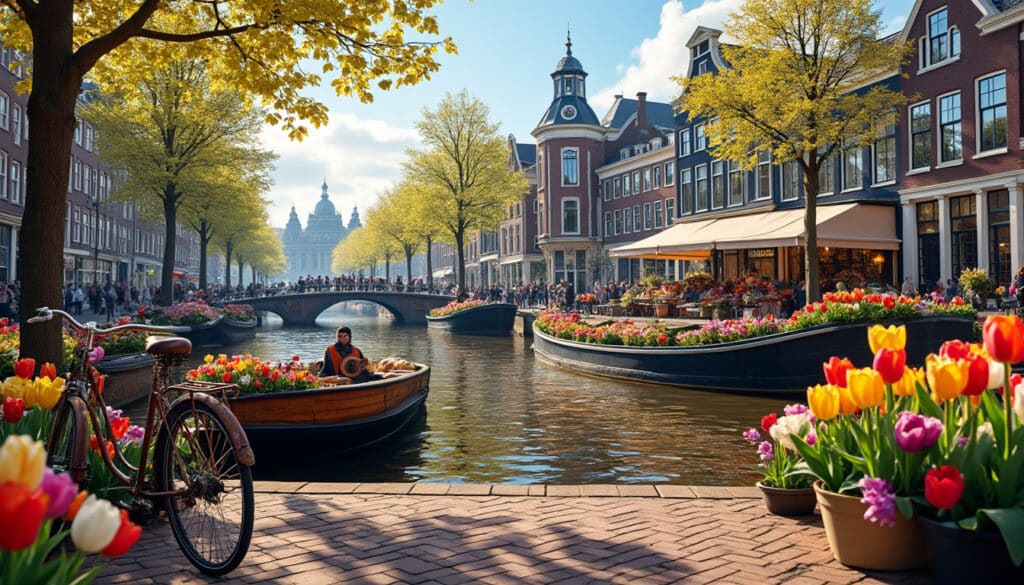
Fun Facts & Curiosities About Amsterdam
Amsterdam, the vibrant capital of the Netherlands, is a city that never ceases to amaze. Known for its serene canals, world-renowned art museums, and rich history, it’s no wonder that this ‘Venice of the North’ attracts over 20 million visitors…
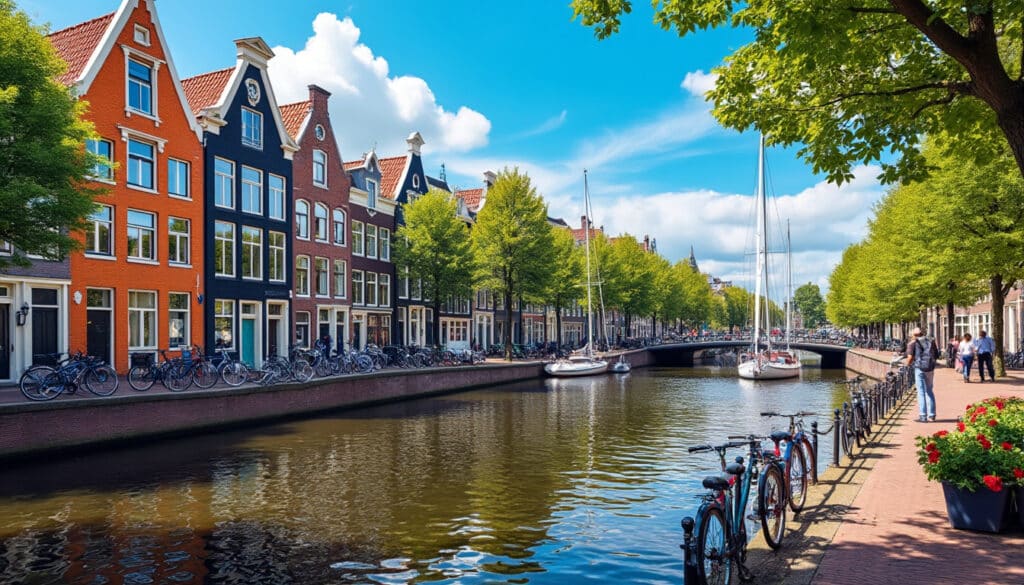
Architecture and urban features of Amsterdam
Amsterdam, a city renowned for its intricate network of canals and historical charm, is also a hub of architectural brilliance. From its iconic canal houses to modern marvels, the city’s architectural landscape offers a delightful exploration for design enthusiasts. As…
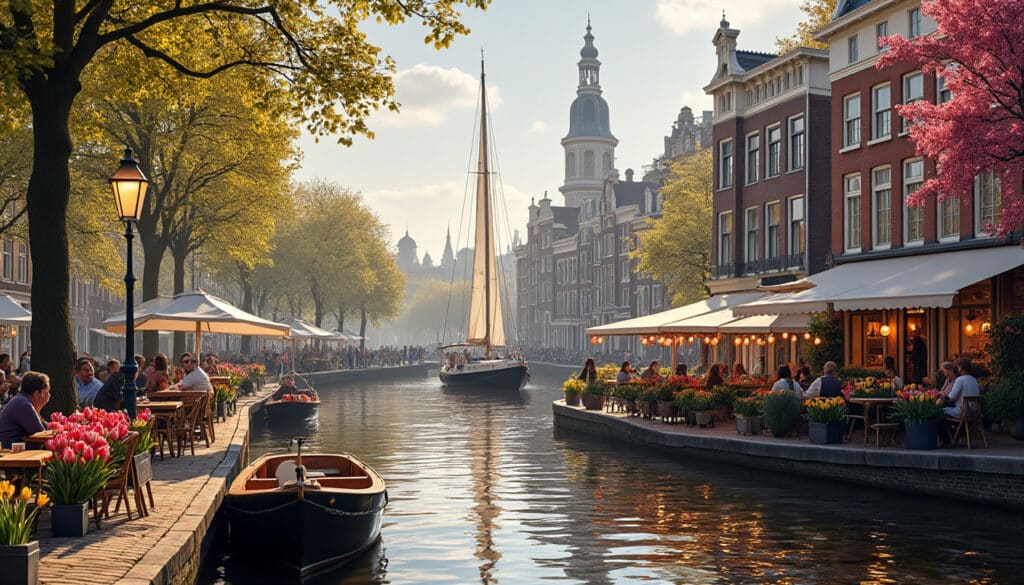
Amsterdam, the capital city of the Netherlands, offers an intriguing blend of historical charm and modern-day convenience. Known for its stunning architecture, cultural diversity, and vibrant neighborhoods, this city provides a unique experience for both residents and tourists. From biking…
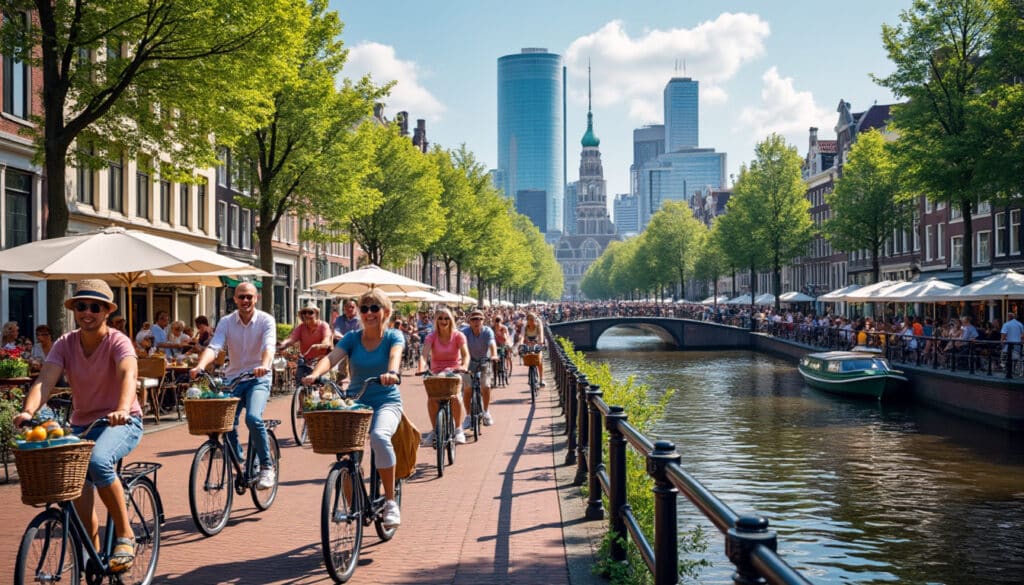
Demographics and geography of Amsterdam
Amsterdam, a city renowned for its intricate canal systems, historic landmarks, and vibrant culture, is a place that offers a captivating blend of the old and the new. Known formally as the capital of the Netherlands, it stands as a…
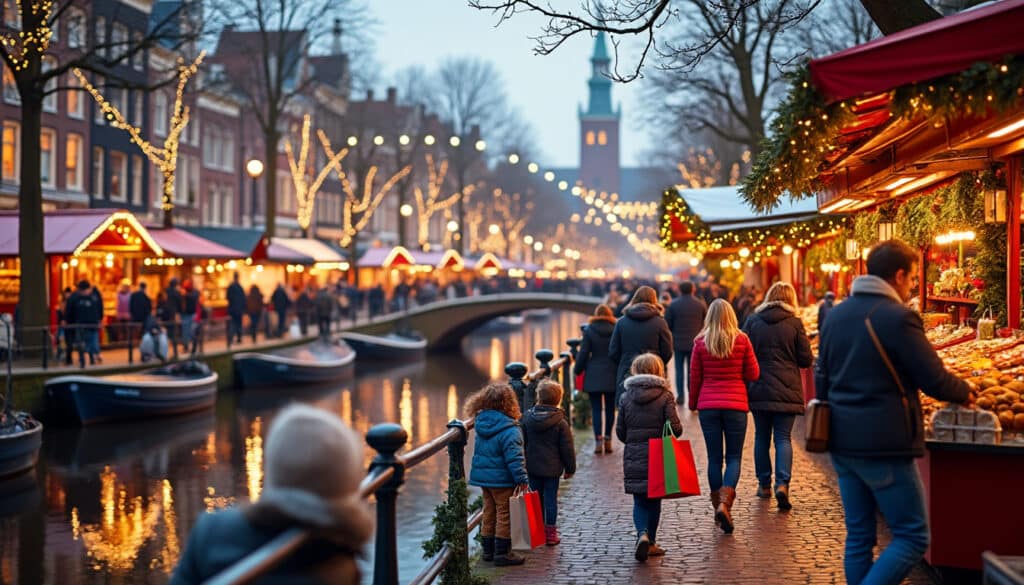
Holidays and celebrations in Amsterdam
Amsterdam, a city with a rich tapestry of history and modern culture, transforms itself through its myriad of festivals and celebrations throughout the year. As each season unfolds, the city reveals a unique character, inviting locals and visitors alike to…
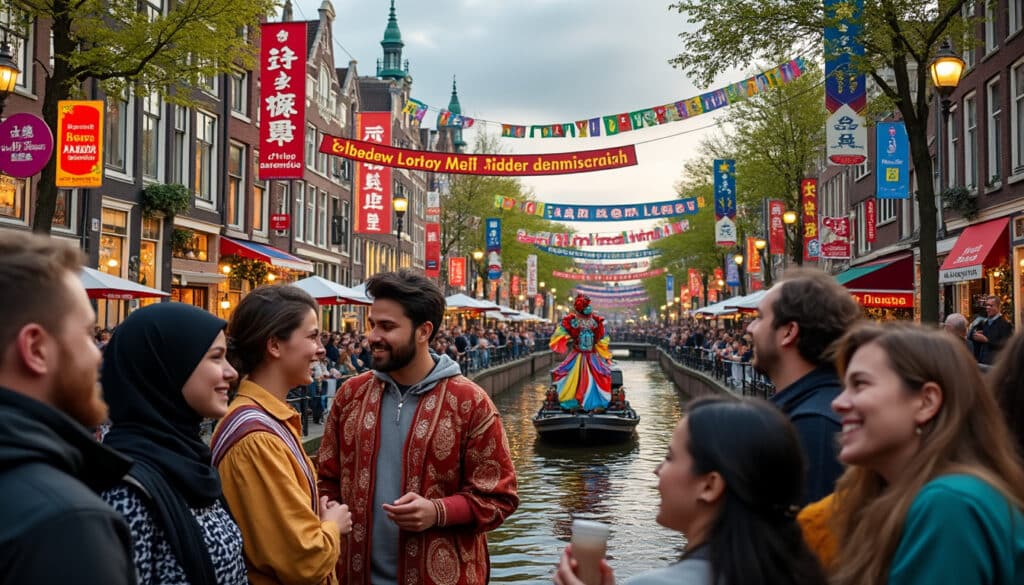
Language and spelling of Amsterdam
Amsterdam, with its historic canals, vibrant culture, and diverse demographics, thrives in its unique linguistic landscape. 🇳🇱 The official language is Dutch, a symbol of the city’s deep roots and rich heritage. Yet, this dynamic metropolis stands out for its…
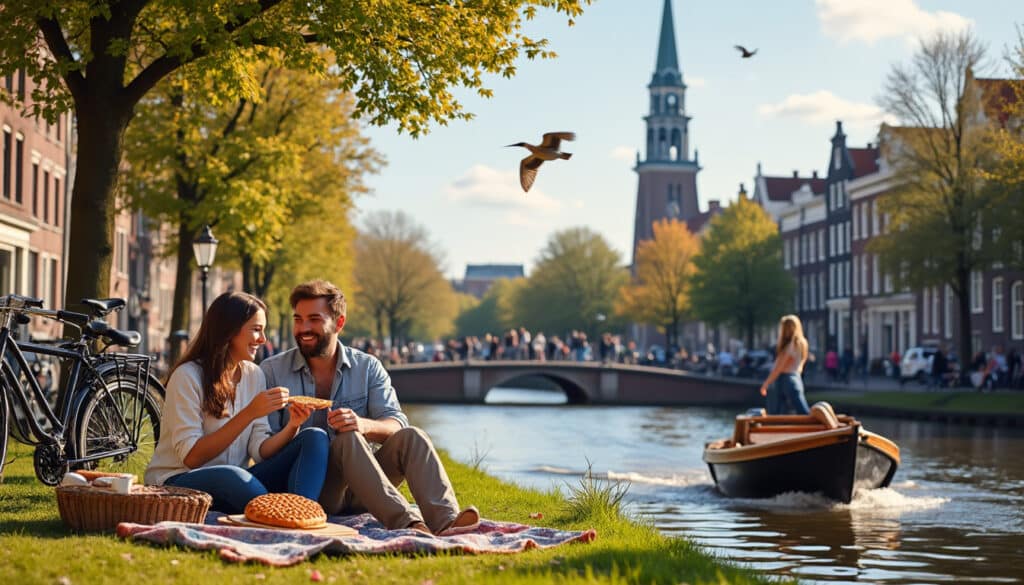
Local tips for tourists in Amsterdam
Amsterdam is a city brimming with historical charm, vibrant culture, and unique experiences that attract millions of visitors each year. While many tourists flock to the typical hotspots, there’s a wealth of hidden gems and local secrets waiting to be…
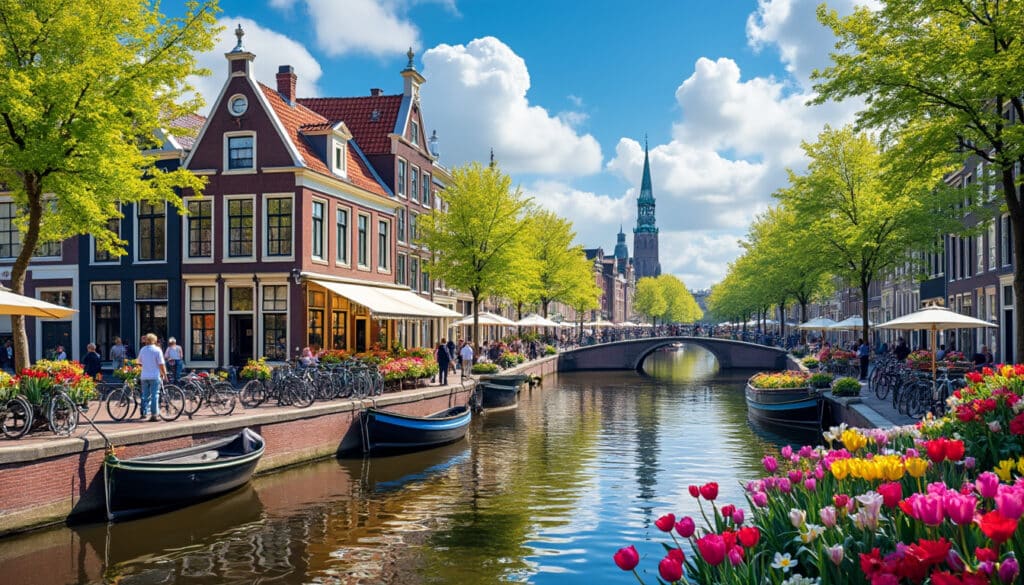
Reputation and identity of Amsterdam
A city of canals, history, culture, and innovation, Amsterdam has always been a significant player on the global stage. Known for its liberal ethos and iconic landmarks like the Van Gogh Museum and the Rijksmuseum, this Dutch capital has cultivated…
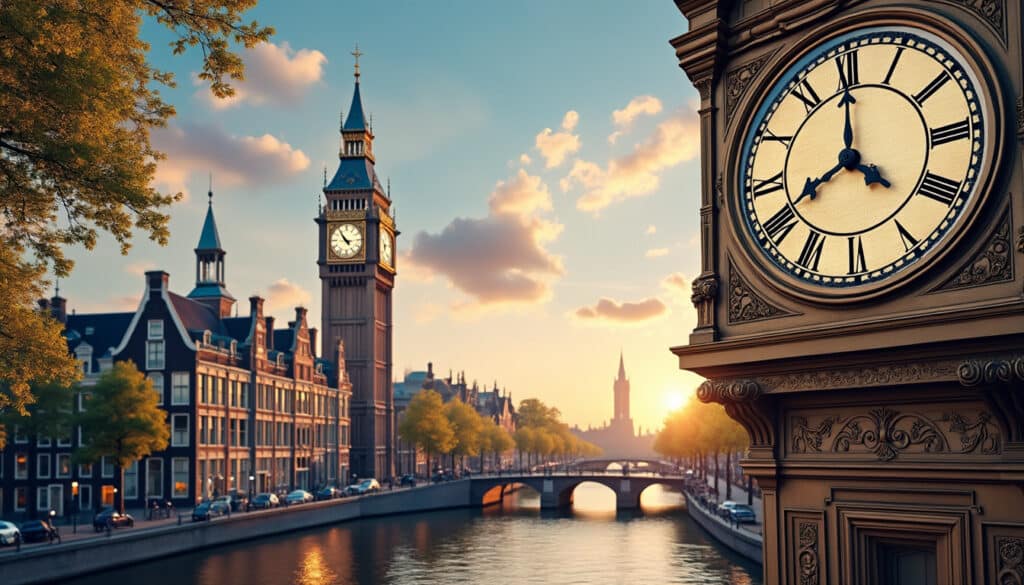
Time and time zone in Amsterdam
In a city as vibrant and multifaceted as Amsterdam, understanding the intricacies of time and time zone is crucial for both residents and visitors alike. From the precision of Amsterdam Clocks to the seasonal shifts in Daylight Saving Time, every…
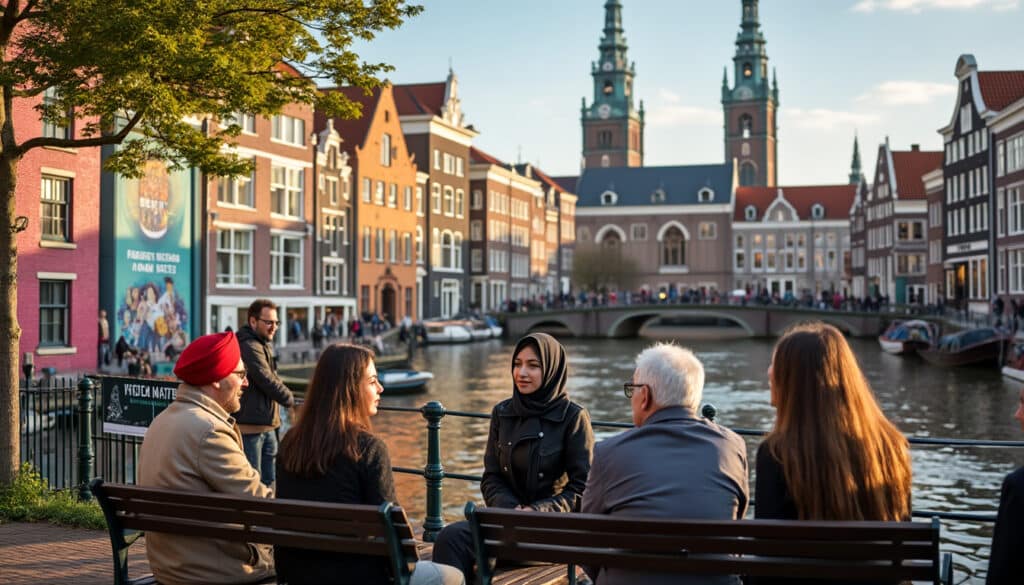
Unusual facts and social issues in Amsterdam
Amsterdam, often celebrated for its charming canals and vibrant culture, offers a blend of historical depth and modern vibrancy. Yet, beneath its picturesque exterior lies a tapestry of unusual facts and pressing social issues that often go unnoticed. From its…

What does Amsterdam look, smell, feel like?
Embark on an immersive journey through the sensory tapestry that is Amsterdam, a city where sight, smell, and touch blend to create an experience both unique and familiar. As bicycles gracefully weave through the cobblestone streets, the unforgiving wind dances…

